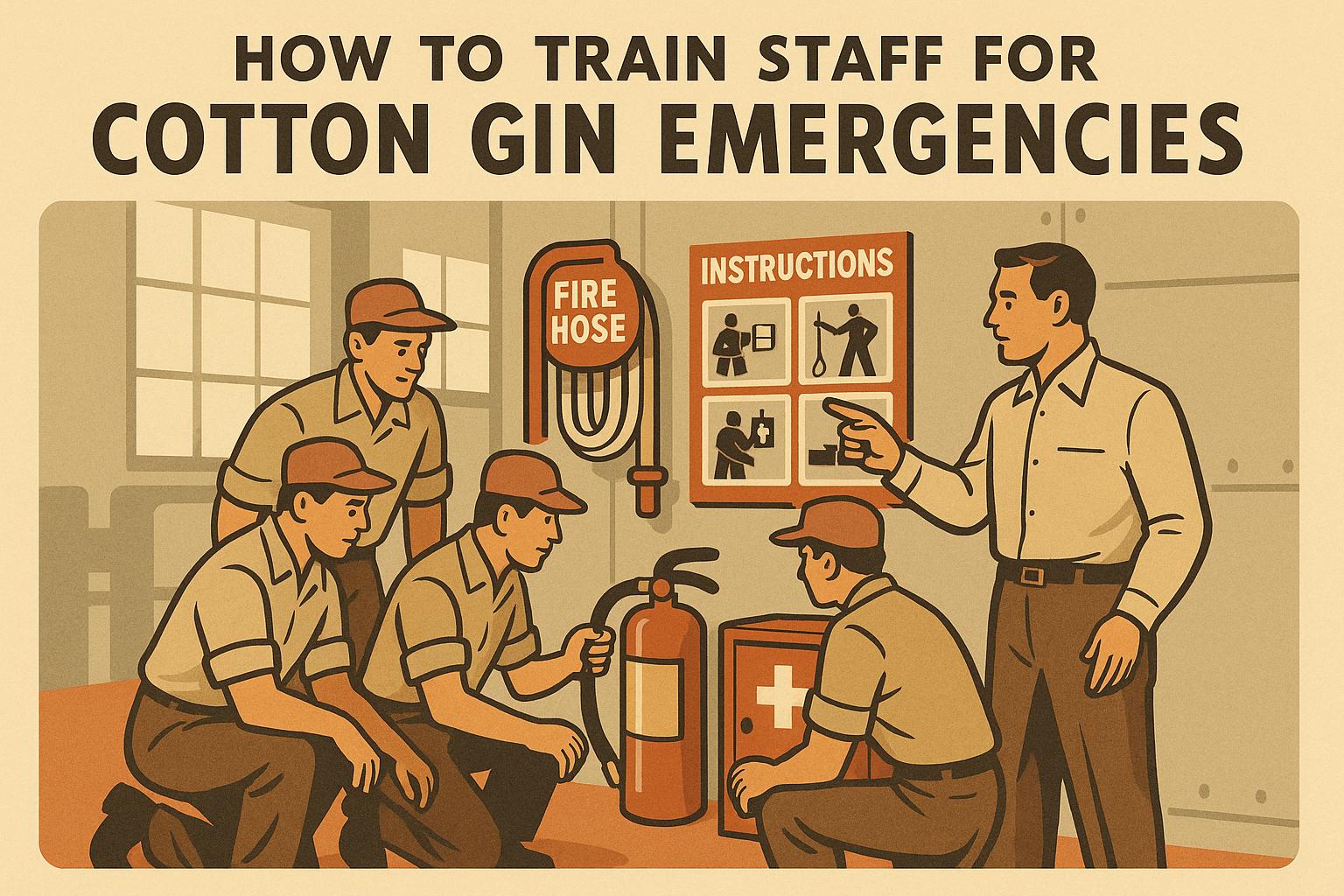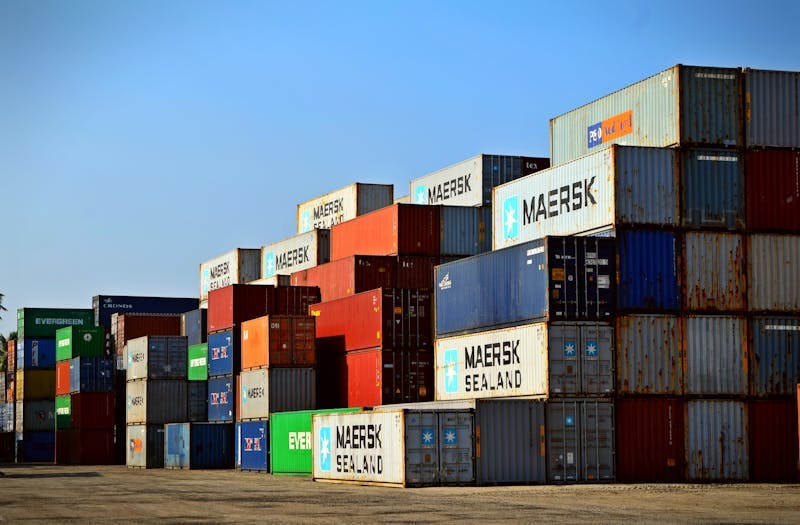Labor costs in cotton ginning vary widely across the U.S., influenced by regional wage rates, economic conditions, and regulations. Here's a quick breakdown:
- Texas High Plains: Lowest labor costs due to lower wages and cost of living. Yard supervisors earn $22.59/hour, and per-bale labor costs are competitive. Stable seasonal patterns help manage expenses.
- Mississippi Delta: Slightly below-average wages ($17.13/hour for day laborers), but seasonal labor shortages and high compliance costs drive up overall expenses.
- Southeast: Moderate labor costs ($16.47/hour for general roles) but faces heavy federal oversight, with frequent penalties for labor violations.
- California Central Valley: Highest costs due to strict regulations and high living expenses. Seasonal workers earn up to $23.34/hour during peak harvest months.
Quick Comparison
| Region | Average Wage | Seasonal Labor Premium | Compliance Challenges |
|---|---|---|---|
| Texas High Plains | $22.59/hour | Stable | Moderate |
| Mississippi Delta | $17.13/hour | High | Frequent federal investigations |
| Southeast | $16.47/hour | High | Heavy oversight |
| California Central Valley | $16.71/hour | Very High | Strict regulations |
Understanding these regional differences helps operators plan budgets and manage costs effectively.
What Is The Cost Of Cotton Ginning? - The World of Agriculture
1. Texas High Plains
The Texas High Plains stands out as one of the most cost-efficient regions for cotton ginning labor in the U.S., thanks to lower wage rates and favorable economic conditions.
Average Hourly Wage
Labor costs for cotton ginning in the Texas High Plains are notably lower than the national average. For example, yard supervisors in Lubbock, Texas - a major hub for ginning operations - earn an average of $22.59 per hour. This rate is about 10% below the national average for similar roles.
In the broader Southern region, total compensation averages $39.71 per hour, significantly less than the $56.31 per hour seen in the Northeast - a cost difference of roughly 29%. Additionally, Lubbock’s cost of living is about 20% lower than the national average. This affordability allows workers to maintain their quality of life while employers benefit from reduced labor expenses. These factors contribute to lower per-bale labor costs, which are explored further below.
Total Labor Cost per Bale
The region’s efficient infrastructure and skilled workforce help keep per-bale labor costs competitive, even as operational expenses rise. For instance, District 2 budget forecasts for 2025 show increased costs for stripping, ginning, and labor compared to 2024. However, the inherent cost advantages of the Texas High Plains help offset these increases, ensuring the region remains competitive.
Seasonal Labor Premium
Seasonal labor patterns in the Texas High Plains are relatively stable, giving gin operators a planning advantage compared to regions with more unpredictable demand cycles. Cotton ginning benefits from these stable seasonal labor costs, unlike other agricultural sectors. Many operators have successfully utilized the H2A program to secure reliable and efficient workers, though this option tends to be more expensive than hiring local labor. While stable seasonal patterns help manage costs, navigating regulatory requirements adds complexity.
Regulatory Impact
Regulatory compliance is another factor shaping labor costs in the region. Federal agencies like OSHA and the Department of Labor enforce strict safety and labor laws, which add administrative challenges for operators.
"Given recent and upcoming budget cuts, the ginning industry can't afford to sit on the sidelines. There is little doubt that in the future the three USDA ginning labs and important USDA staff positions may be in jeopardy."
– Lee Tiller, president of the National Cotton Ginners Association
While regulatory compliance ensures safety and fairness, it also increases administrative costs for operators across the region, adding another layer of complexity to labor management. These challenges underscore the importance of balancing operational efficiency with compliance demands.
2. Mississippi Delta
The Mississippi Delta presents unique labor challenges, marked by low wages, seasonal worker shortages, and increasing regulatory demands. Unlike regions such as the Texas High Plains, the Delta's labor landscape highlights the varying cost pressures faced by U.S. cotton ginning operations.
Average Hourly Wage
Day laborers in the Mississippi Delta earn an average of $17.13 per hour, slightly below the national average of $18.00. Mississippi ranks last among all 50 states for day labor wages. Hourly pay in the region generally falls between $15.05 and $18.46. Cities like Pascagoula and Rosedale offer higher rates, at $18.14 and $18.08 per hour, respectively. For labor supervisors, annual earnings can climb significantly higher, with salaries averaging $15,811 more than the typical day laborer’s yearly income of $35,638 - a premium of 44.4%. These figures illustrate why hiring during peak seasons remains a persistent challenge.
Seasonal Labor Premium
Cotton ginning in the Delta is a highly seasonal business, running for just 2.5 to 3 months, typically from October to January. This brief but intense period creates a strong demand for workers willing to handle long shifts. Haywood Wilson, general manager of Cowart Gin, describes the challenge:
"Cotton is primarily a two-and-a-half to three-month season for us at the gin... It involves twelve-hour days, six to seven days a week, for only a few months. It's hard to find skilled laborers that are free or willing to work those long, hard days for just a season. Finding labor is one of the biggest challenges for gins year after year."
To meet this demand, operators often offer higher wages and additional benefits to attract workers, but retaining skilled labor beyond the season remains a hurdle. While automation has reduced some manual tasks, experienced operators are still essential during peak periods, driving up labor costs even further.
Regulatory Impact
Labor challenges in the Delta are compounded by increasing regulatory oversight. Federal agencies, particularly OSHA and the EPA, have ramped up enforcement, imposing stricter compliance requirements. Dwayne Alford, President of the National Cotton Ginners Association, explains:
"Agencies such as OSHA and EPA have been especially active during the Obama administration, and NCGA has been active in commenting on proposed rules and developing materials to address changes to regulations that affect ginners."
Immigration policies add another layer of complexity for labor management, while air quality standards and potential climate legislation contribute to rising compliance costs. These factors push ginning operators to find ways to operate more efficiently while grappling with growing administrative expenses.
3. Southeast
The Southeast follows a pattern similar to the Texas High Plains and Mississippi Delta, with labor costs shaped by a mix of variable wages and stringent regulatory demands. While the region maintains competitive labor costs per bale compared to the national cotton belt average, operators face rising expenses due to strict federal compliance requirements.
Average Hourly Wage
In Alabama, yard supervisors earn an hourly rate of about $23, translating to annual salaries around $48,203, with a range spanning $35,333 to $57,410. General cotton farming roles in the region average $16.47 per hour. Meanwhile, plant managers bring in approximately $115,663 annually.
Total Labor Cost per Bale
Although these figures are rooted in 2010 data, they still highlight ongoing cost pressures in the Southeast. Facilities processing an average of 24,122 bales reported labor costs of $11.09 per bale, contributing to total variable costs of $20.06 per bale. This is slightly below the national average of $20.95 per bale. Larger-scale operations tend to benefit from cost efficiencies by distributing fixed labor costs across more bales.
Seasonal Labor Premium
The Southeast’s short harvest season forces operators to pay higher wages for seasonal workers. Seasonal labor accounts for $7.04 of the $20.95 average total variable costs per bale. This condensed processing period intensifies competition for workers, driving up labor expenses during peak months.
Regulatory Impact
Federal labor compliance poses a significant challenge for cotton gin operators in the Southeast. Between November 2019 and March 2021, Department of Labor investigations revealed that 81% of cotton gin employers in the region violated federal labor standards. Juan Coria, regional administrator for the Wage and Hour Division, emphasized:
"Our investigations show that far too many cotton gin operators are not compliant with federal labor law."
These violations resulted in substantial financial penalties. The Department of Labor recovered $282,626 in back wages and $10,785 in liquidated damages for 620 workers, while also imposing $152,539 in civil money penalties on 37 employers. Common infractions included failing to pay overtime, inadequate record-keeping, not disclosing employment terms, and neglecting housing safety standards. These regulatory issues highlight the operational hurdles that distinguish the Southeast from other regions.
sbb-itb-0e617ca
4. California Central Valley
The California Central Valley stands out among cotton-producing regions due to its unique challenges. Higher living costs and stricter regulations significantly influence the labor cost landscape here, making it distinct from other areas.
Average Hourly Wage
As of July 27, 2025, cotton pickers in California earn an average hourly wage of $16.71, which translates to an annual salary of $34,760. This figure is slightly below the national average of $35,221 per year. According to ZipRecruiter, hourly wages in the state range from $10.68 to $19.93, with most workers earning between $15.19 and $18.03. Interestingly, California ranks last - 50th out of all 50 states - for cotton picker salaries. However, urban areas tend to offer higher wages, often approaching $20 per hour. These wage disparities become even more pronounced during the harvest season.
Seasonal Labor Premium
Wages see a noticeable increase during peak harvest months. For example, in Los Banos, seasonal workers earn between $18.54 and $23.34 per hour, while full-time warehouse roles in Shafter offer rates ranging from $24.35 to $25.35 per hour. The California Cotton Ginners and Growers Association, which represents all cotton ginners and growers in the state, acknowledges the challenges these seasonal fluctuations pose for operations. These spikes in pay during harvest season, combined with regulatory pressures, add to the overall variability in labor costs.
Regulatory Impact
California’s stringent regulatory framework further drives up labor costs. Strict air quality and transportation laws, such as AB1066, have pushed operators to rely more on mechanization to manage rising compliance expenses. Mike Davis, General Manager of Dos Palos Co-Op Gin, highlighted specific issues like transportation limitations with module truck movers and the challenge of meeting truck length requirements for air quality compliance. Roger Isom, President of the California Cotton Ginners and Growers Association, noted that AB1066 impacts both farms and workers across the valley, forcing many to turn to mechanization as a way to adapt to these increasing costs.
Advantages and Disadvantages
Every cotton-producing region comes with its own set of strengths and challenges. Knowing these regional differences is crucial for gin operators when deciding on location, budgeting, and planning operations.
| Region | Advantages | Disadvantages |
|---|---|---|
| Texas High Plains | Lower labor costs; fewer regulatory hurdles; strong agricultural workforce | Limited skilled labor availability; competition for seasonal workers with other crops |
| Mississippi Delta | Competitive wages (e.g., AEWR of $14.53 in some areas); deep-rooted agricultural expertise; experienced labor pool | High compliance costs; frequent Department of Labor investigations |
| Southeast | Long history of cotton production; well-established gin networks | Heavy federal oversight; steep penalties for wage violations |
| California Central Valley | Advanced mechanization; year-round farming opportunities | High regulatory expenses; complex compliance requirements |
These regional differences highlight how factors like labor costs, regulations, and workforce availability shape the success of cotton ginning operations.
For instance, lower labor costs in areas like the Mississippi Delta can significantly improve profit margins, especially during the harvest season when labor expenses are at their peak. However, regions with stricter regulations, such as the Southeast, face higher compliance costs, making skilled labor even harder to secure. Dusty Findley, CEO of Southeastern Cotton Ginners, sheds light on this:
"Labor is one of the highest costs a gin faces, in terms of wages and things like insurance and injuries. The crackdown in immigration over the last couple of years has made labor harder to come by, both local and migrant, and most gins are trying to focus on how are they going to do the job they have to do with fewer people. By necessity, they're trying to find more efficient ways to do things."
One common challenge across all regions is retaining skilled workers. Agricultural wages often lag behind other sectors, making it difficult to keep skilled labor during critical harvest periods.
To tackle these challenges, many operators are increasingly relying on mechanization. By reducing dependence on manual labor, they aim to stabilize costs and maintain efficiency despite the growing pressures of compliance and workforce shortages.
Conclusion
Labor costs in the cotton industry vary significantly by region. The Texas High Plains and Mississippi Delta generally have lower labor expenses, while the California Central Valley sees higher costs due to stricter regulations and higher living expenses. In the Southeast, labor costs are moderate but come with notable federal compliance hurdles.
For operators, keeping an eye on these regional labor trends is crucial to managing budgets and streamlining operations. By understanding local wage differences and adjusting strategies to fit, cotton gin operators can work toward maintaining profitability.
To assist with these efforts, cottongins.org provides detailed insights into the locations of cotton gins across various regions. This resource helps operators grasp market distribution and make informed decisions about their operations.
FAQs
How do labor costs vary by region, and what impact do they have on cotton ginning profitability?
Regional labor costs have a big impact on the profitability of cotton ginning operations across the United States. For instance, gins in the Western region might spend about $16.80 per bale on labor, while those in the Mid-South often see lower costs, around $11.09 per bale. These differences can dramatically influence profit margins, especially since labor expenses can make up as much as 32% of total ginning costs.
Higher labor costs tend to squeeze profit margins, making it harder for those regions to remain competitive and financially stable over time. By recognizing these cost variations, operators can better plan their budgets and make smarter decisions to improve their bottom line.
What regulatory challenges in the California Central Valley affect cotton gin labor costs?
Cotton gin operators in California's Central Valley are navigating a complex web of regulations that directly influence their labor expenses. For starters, stringent air quality standards, particularly those targeting particulate matter (PM) emissions, demand substantial investments in compliance measures. This often includes installing advanced dust control systems and implementing rigorous waste management practices, all of which drive up operational costs.
On top of that, California's labor laws add another layer of financial pressure. Requirements like prevailing wages and strict workplace safety protocols mean businesses must pay higher wages and ensure meticulous adherence to safety standards. Together, these environmental and labor regulations create a costly challenge for cotton gin operators in the region.
Why is it difficult to find seasonal labor in the Mississippi Delta, and how are operators managing these challenges?
The Mississippi Delta grapples with distinct hurdles in its seasonal labor market. Factors like low labor force participation, economic struggles, and a shortage of skilled workers create significant challenges for cotton gin operators, especially during peak seasons when demand for labor surges.
To tackle these issues, operators are turning to practical solutions. They're introducing workforce training programs, backing reskilling efforts, and offering job readiness resources. These initiatives aim to enhance worker skills and increase participation, helping to ease labor shortages and ensure smoother operations when the workload is at its highest.


